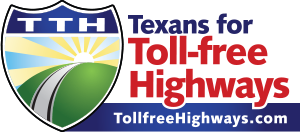NOTE: TxDOT presented in public hearings that 281 would be a 12 lane tollway in the widest parts, now it’s 16! The ORIGINAL plan for 281 was $48 million (See it here.), now as a tollway $83 million ($77 million in gas tax, $6 million utility relocation costs where the ratepayers of CPS will pick-up the tab)…FULLY funded, yet they want to charge you a lifetime toll tax to drive on it!
We can’t trust that these bureaucrats tell the truth!
Timber! U.S. 281 on road to tolls
Web Posted: 12/01/2005 12:00 AM CST
By Patrick Driscoll
Express-News Staff Writer
The newest signs of construction on U.S. 281 aren’t pretty, but they’re the first visible proof that, yes, toll roads are coming to San Antonio.
Crews have begun scraping live oaks into piles along the highway and putting up fences to catch silt that rains soon will scour from the naked ground.
In January, workers will begin constructing frontage roads and later add four to eight express toll lanes from North Loop 1604 to Stone Oak Parkway. The new roadway will be 16 lanes at its widest points.
“It’s a lot of pavement,” said Frank Holzmann, a Texas Department of Transportation engineer.
The $83 million job, mostly funded with $77 million in gas taxes, is expected to take three years. TxDOT studies anticipate toll fees of 14 cents a mile.
While motorists welcome the extra lanes, they frown at the idea of paying tolls.
“It should have been done a long time ago,” said John Hay, who drives on that stretch of U.S. 281 to get to work.
“But is that the toll road?” he added after a pause. “I think that’s a bunch of crap. I don’t think it needs to be a toll road.”
Like many others, Hay will scout for the best alternate free road and figures he may have to add 8 miles to his 25-mile commute.
“But I won’t have to deal with the tolls, I guess,” he said.
Citing a shortfall of $8.4 billion over 25 years to build needed transportation projects in San Antonio, the Metropolitan Planning Organization has included more than 70 miles of toll roads in its long-range plans.
The agency also set aside more than $500 million in public money to subsidize toll projects.
Two private consortiums are competing to fully finance, build and operate the most lucrative toll lanes — a 47-mile system on Loop 1604 and U.S. 281 on the North Side.
The construction that starts next month is for the first 3 miles of U.S. 281 toll lanes, which will be the heart of the 47-mile network and a bargaining chip for the state in upcoming negotiations with the toll-road companies.
“It’s a big step for the city of San Antonio and in improving mobility for the area,” Holzmann said.
Some motorists are furious that existing U.S. 281 highway lanes will be replaced with frontage roads — even though the number of lanes will be the same — and say the toll lanes won’t fix traffic problems.
Critics haven’t given up on efforts to stop new lanes on U.S. 281 from being tolled.
“Have toll roads solved Houston’s or Dallas’ congestion and highway funding issues? No!” said Terri Hall of Texas Toll Party — San Antonio. “This toll mandate is an outrage, and our grass-roots movement is growing by the day.”
Other hapless drivers still are learning the news.
“Toll lanes! My gracious,” said John Perrott, stroking his chin. “Well, I don’t know, I might go the back way.”

